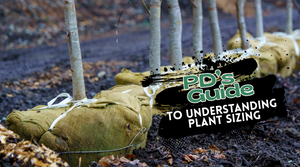Silk Tree
Silk Tree (Albizia julibrissin)
Silk Tree (Albizia julibrissin), also known as Mimosa or Persian Silk Tree, is a fast-growing ornamental tree valued for its airy canopy, feathery foliage, and exotic summer blooms. Native to Asia and widely planted across the United States, it brings a tropical feel to temperate gardens. In midsummer, it produces pink, powder-puff flowers that float above its finely divided leaves, attracting butterflies, bees, and hummingbirds.
Distinctive Features
Typically reaching 20 to 40 feet tall and wide, Silk Tree forms a broad, flat-topped canopy with a graceful silhouette. Its bipinnate leaves resemble fern fronds, giving it a soft texture that moves easily with the wind. The pink blooms appear in clusters and are fragrant, adding ornamental value and supporting pollinator activity. In warm regions, it may naturalize and self-seed, particularly along roadsides or in disturbed areas.
Growing Conditions
- Sun Exposure: Full sun is best for flowering and healthy canopy development.
- Soil: Tolerates a wide range of soils, including poor or sandy conditions; well-drained soil preferred.
- Water: Low to moderate; drought tolerant once established.
- Humidity: Adapts well to hot and humid climates; suitable for coastal and inland regions.
- USDA Hardiness Zones: 6�9; may regrow from roots in colder zones after winter dieback.
Ideal Uses
- Focal Point Plantings: Its dramatic form and summer flowers make it a visual anchor in the landscape.
- Pollinator Gardens: Attracts hummingbirds, butterflies, and bees during its bloom period.
- Shade Provider: Open canopy offers filtered shade perfect for patios or courtyard plantings.
- Street and Median Trees: Tolerates urban conditions and provides quick coverage.
- Informal Landscapes: Complements naturalistic and tropical-style designs.
Low Maintenance Care
Silk Tree is fast-growing and resilient, with minimal maintenance needs once established. Pruning is recommended to develop strong structure and limit self-seeding in unmanaged areas.
- Watering: Water regularly during establishment; mature trees tolerate drought well.
- Pruning: Best done in late winter to shape the canopy and remove any suckers or dead wood.
- Fertilizing: Not typically required; apply light fertilizer in spring if growth appears weak.
- Pest and Disease Resistance: Generally pest-resistant; may be susceptible to mimosa wilt in humid regions.
- Winter Care: Fully hardy in Zones 6 and above; mulch in colder zones to protect roots if dieback occurs.
Why Choose Silk Tree?
Silk Tree offers an unmatched combination of fast growth, soft texture, and exotic bloom appeal. Whether used as a specimen, shade provider, or pollinator magnet, it brings a sense of movement and color to summer gardens.
- Unique Pink Flowers: Fragrant, feathery blooms appear in midsummer and attract pollinators.
- Graceful Foliage: Fern-like leaves create texture and light movement in the breeze.
- Fast Growth: Establishes quickly and forms a broad canopy in just a few seasons.
- Heat and Drought Tolerant: Ideal for hot climates and low-maintenance landscapes.
- Versatile Use: Suitable for residential, civic, and naturalized landscapes.
For bold summer color, tropical form, and minimal upkeep, Silk Tree (Albizia julibrissin) is a reliable and eye-catching addition to warm-region landscapes.

OUR SIZING
Not sure what 2 inch B&B or 30 Gallon Clump really means? This guide breaks down all our plant size terms so you know exactly what to expect, whether you're ordering online or picking up at our nursery. From caliper measurements to container volumes, we've decoded our system to help you shop with confidence.

Plant Detectives Shipping Guide
Nationwide plant shipping made easy. Learn how we ship trees, shrubs, annuals and perennials. No order too big or too small. Fast, careful, and contractor-friendly.

